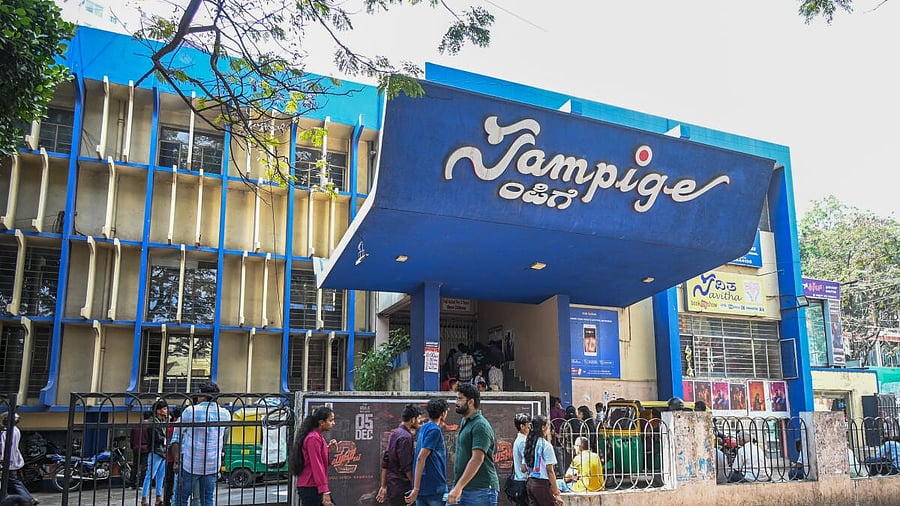
Sampige Theatre.
Credit: DH Photo
I live in an apartment complex behind Sampige Theatre in Bengaluru’s bustling Malleswaram. I was disheartened to learn of its impending closure. However, I soon adopted a philosophical stance, acknowledging that change is inevitable and the old must often give way to the new.
My mind wandered back to the 1960s, when I first arrived in (then) Bangalore in search of employment. The city’s enchanting weather, gentle people, and vibrant cultural scene captivated me. As a young bachelor working at the Defence Research and Development Organisation (DRDO), I had ample opportunity to explore the city’s diverse movie theatres.
There were movies in every possible language—a true reflection of Bengaluru’s tolerant and eclectic culture. My cinematic journey began with Jeetendra’s Jigri Dost at the air-conditioned Kino theatre in Seshadripuram. Bengali movies, including Satyajit Ray classics like Pather Panchali and Apur Sansar, were screened at Rex Theatre as morning shows and my friends made it a point to take me to watch them.
As defence employees, we enjoyed concessional tickets at the BRV theatre. I distinctly remember watching Dustin Hoffman’s The Graduate and Butch Cassidy and the Sundance Kid starring Robert Redford and Paul Newman. We would be lost in the pitch-black darkness of the movie theatre for a couple of magical hours.
Though my Kannada vocabulary was limited and I barely understood the language back then, my colleague insisted I watch at least one Kannada movie. So we walked up to the States Theatre in Majestic to watch Girish Karnad’s Kaadu. I could follow the storyline, thanks to my friends who provided audio subtitles.
Majestic was the hub of Bengaluru’s cinema scene with iconic theatres like Movieland, Kapali, Sangam, Abinay, and Tribhuvan. I was fortunate to see the legendary Raj Kapoor when he had come for the première of his directorial venture Ram Teri Ganga Maili in one of these theatres. Incidentally, his 100th birthday was recently celebrated.
One theatre in the 1980s, interestingly, was even rumoured to be haunted. The story went that a man, despite warnings that the theatre was haunted, went alone to watch a movie and was terrified to find a ghost sitting beside him. He fled the theatre in panic and ran into a policeman who was also a ghost!
My most nostalgic moment was watching Hrishikesh Mukherjee’s Satyakam, with its powerful dialogue still resonating in my mind: “Satya bolne ka ahankar nahi, satya bolne ka saahas chahiye chahe wo sach kitna bhi apriya, kitna bhi kathor kyun na ho” (to speak the truth, you need courage, not arrogance, even if that truth is disagreeable or cruel).
As I bid farewell to Sampige Theatre, I am reminded of the profound impact these cinematic institutions have had on our lives, fostering a shared cultural experience that transcends generations.